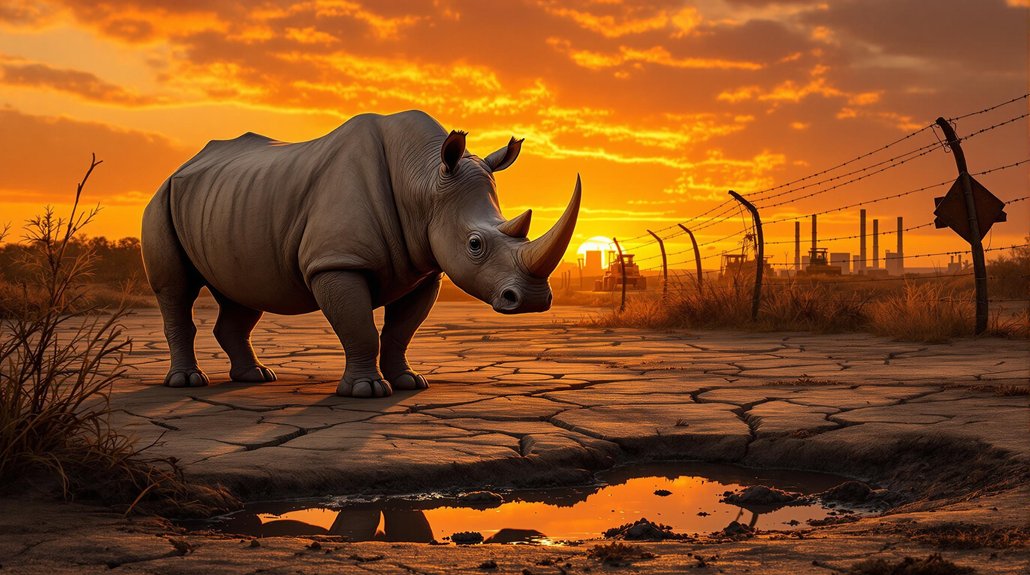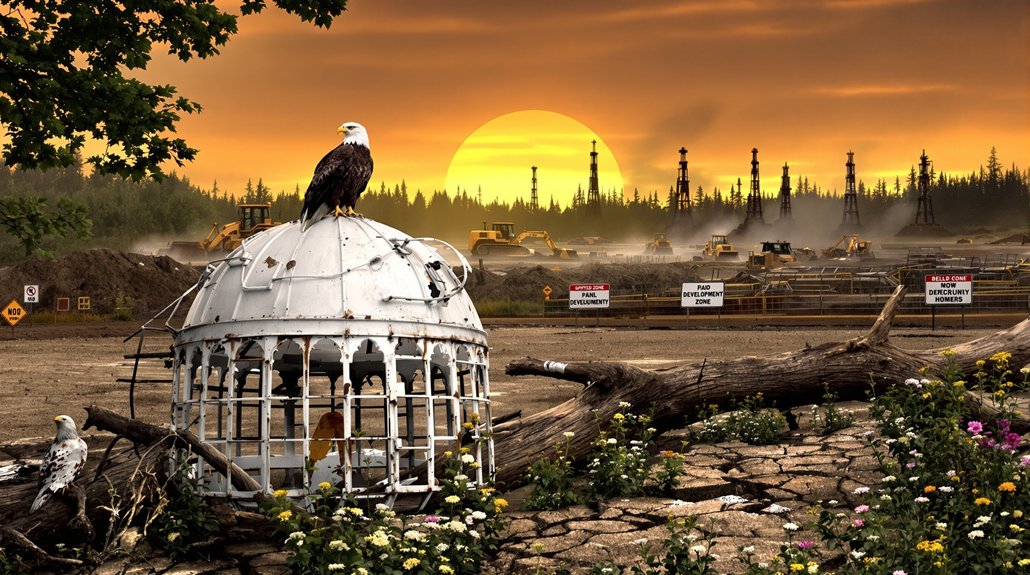Wildlife extinction rates have soared to 1,000 times normal levels, with one million species now at risk. The Trump administration’s rollbacks to the Endangered Species Act prioritize economic considerations over protection. Changes include easier species removal from protected lists and expedited environmental reviews for development projects. These policies threaten biodiversity worth trillions in ecosystem services while hampering conservation efforts. Further exploration reveals the full impact of these regulatory shifts.
While humans go about their daily lives, an unprecedented crisis is unfolding across the planet. Scientists warn that one million species face extinction, with the current extinction rate 1,000 to 10,000 times higher than the natural background rate. This alarming trend has been called the “sixth mass extinction” by experts, and it’s driven almost entirely by human activities.
The numbers paint a grim picture. About 41% of amphibians, 26% of mammals, and 12% of bird species are threatened with extinction globally. Iconic animals like the African forest elephant, Amur leopard, and all orangutan species are now critically endangered, with some populations reduced to fewer than 100 individuals.
The planet’s biodiversity teeters on the edge, with countless species facing imminent extinction as their numbers dwindle toward oblivion.
Habitat loss remains the primary threat to wildlife, but climate change, pollution, overfishing, and invasive species also play major roles. These threats have intensified under the Trump administration, which has systematically weakened environmental protections. Recent data shows a shocking 73% decline in average wildlife population sizes globally from 1970 to 2020.
Changes to the Endangered Species Act have made it easier to remove species from protection and harder to designate critical habitat. The administration has changed how the government evaluates species for protection, now requiring economic impact assessments before listing decisions.
Environmental reviews for development projects have been expedited, often at the expense of thorough wildlife impact studies. These policy changes have broader implications beyond American borders. The U.S. withdrawal from the Paris Climate Agreement signaled a retreat from global conservation leadership, potentially triggering similar actions by other nations and reducing international conservation funding.
The economic stakes are high. Biodiversity provides ecosystem services worth trillions annually, including food security, tourism revenue, and potential medical discoveries. Without adequate protections, these benefits are at risk.
Conservation faces other obstacles too, including funding cuts to wildlife protection agencies and reduced habitat protections on public lands. New regulations explicitly ignore climate impacts on species, despite evidence that climate change affects nearly half of terrestrial mammals and many threatened birds. As regulations continue to favor development over conservation, the global extinction crisis threatens to accelerate, with consequences that will affect generations to come.








